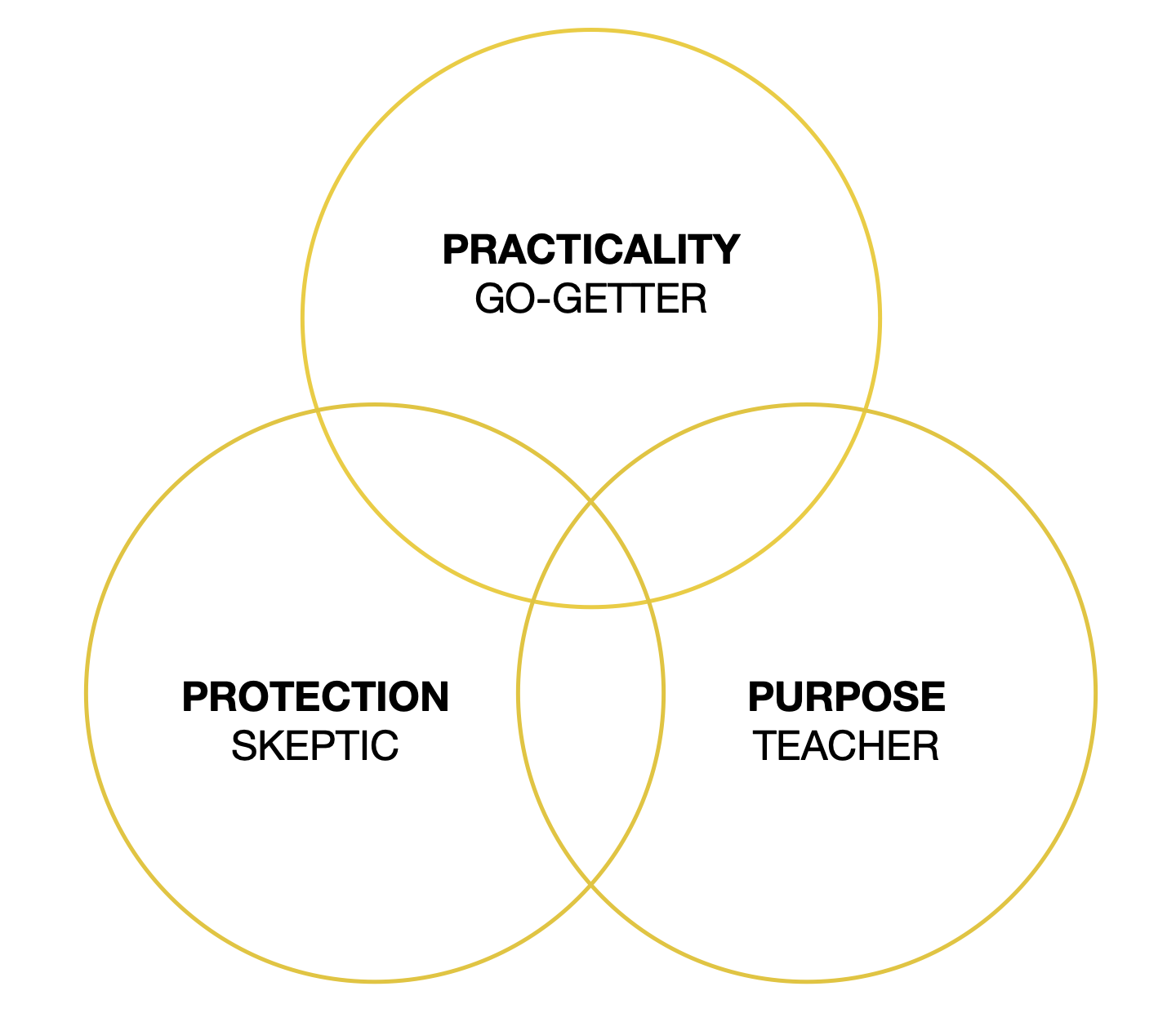

Understanding the mobilizer type is helpful regardless of whether you’re selling to multiple stakeholders or just one. That’s because anyone who wants to advance change in an organization is likely to be one of these types of people.
You have a brand promise, right?
You know, the value you want your customers to rely upon you bringing them every time?
If you don’t or it’s not clear, perhaps, as I wrote about before, Maslow can help.
But only so far. Maslow’s hierarchy of needs is generalized to humanity at large and we all know that people see the world through different lenses. That’s what makes creating a compelling brand promise rather difficult.
Water it down too much in order to appeal to anyone, and it appeals to no one. Make it too narrow, and it may miss an important audience.
Fortunately, the research done by CEB (now Gartner) as detailed in The Challenger Customer can help narrow down our thinking about it. The authors set out to understand how companies reach consensus to buy products and services.
Their extensive research revealed that there are seven different ways people think about the purchasing process. Each has a different “mental model” – seven different lenses for how they see the world.
That’s still a lot of different perspectives to consider in creating a brand promise.
Enter the mobilizers: the people who make your sale happen.
In looking closer at the data, the authors discovered that though seven different archetypes may be involved in a purchase, only three of these had the most influence in the actual purchasing decision.
They are the “mobilizers,” as the authors refer to them. They are the ones who advance the sale, while the others are neutral or detract from it. The mobilizers share one thing in common: they each embrace change, unlike their four other counterparts.
But that’s where their similarities end. They may push for change but think about it from entirely different perspectives.
These mobilizers are:
- The Go-Getter. These are the overachievers and, as their name suggests, they get stuff done. They don’t care where the idea comes from, just that it keeps things moving.
- The Teacher. These are the people that others seek out to to get new insights and ideas. They are especially good at persuading others based on what they know.
- The Skeptic. Not to be confused with The Blocker, who’s always opposed to change, Skeptics believe that change should be incremental and proven. They’re the first to see the risks and often the last to be convinced of a solution.
Understanding the mobilizer type is helpful regardless of whether you’re selling to multiple stakeholders or just one. That’s because anyone who wants to advance change in an organization is likely to be one of these types of people.
And your brand promise needs to appeal to them.
Which begs the question, How do I know if it does?
Making sure your brand promise appeals to the mobilizers
Let’s think about the core attribute for each of these archetypes. Perhaps a Venn diagram will help:

Let’s look at each through their lens and the underlying question they might ask about your brand promise.
The Go-Getter Lens: Practicality
The Go-Getter Core Question: Is there a clear path to demonstrating practical value to change?
Go-Getters measure the merit of something based on their perception that it’s a practical solution that can accomplish a change they view as important. So they need to see a clear outcome.
The Teacher Lens: Passon
The Teacher Core Question: Does it elicit a compelling future state that's worth the change?
The Teachers are visionaries and seek bold initiatives that will engage others and bring the excitement needed to make big changes. They’re looking to see if it’s meaningful enough to ignite passion in the project.
The Skeptic Lens: Protection
The Skeptic Core Question: Are there sufficient proofs that the promise is attainable?
It’s important to remember that the Skeptic is not resistant to change, they are resistant to stupid change–the kind that creates only change, not results. So, they’re checking the fine print, asking the challenging questions, assuming the worst. They want to protect the organization from stupid change.
How does this apply to me?
Now, consider your brand promise – not just your tagline or home page headline, but the value you want to convey every single time a customer interacts with you. What does that experience look like to a Go-Getter, a Teacher, and a Skeptic?
Will they see a promise that gets the job done, credibly and in a way that brings with it the compelling reason to change?
If not, it may be worth reworking your brand promise to consider those perspectives.
One important caveat. One of the surprising and counterintuitive outcomes of the CEB research was that companies that focused too much on segmenting their differentiation to different buyers ended up significantly less likely to make a sale. This is especially true with teams of buyers that are dysfunctional or unaligned. That’s because focusing a brand promise, value prop, or any market message on just one group, enhances their differences, and not the commonalities necessary to gain group consensus.
This is counterintuitive to common practice of personalized marketing to specific segment needs and is one of the reasons you should evaluate your brand promise from all three of the mobilizer perspectives.
Does it offer a practical solution the Go-Getter seeks? Can it rally the heart of change the Teacher wants to inspire? Can it be achieved with the kind of certainty the Skeptic would get behind?
That’s the mobilizer test. You might as well be asking these questions about your brand promise. Your prospects do.
.png)

